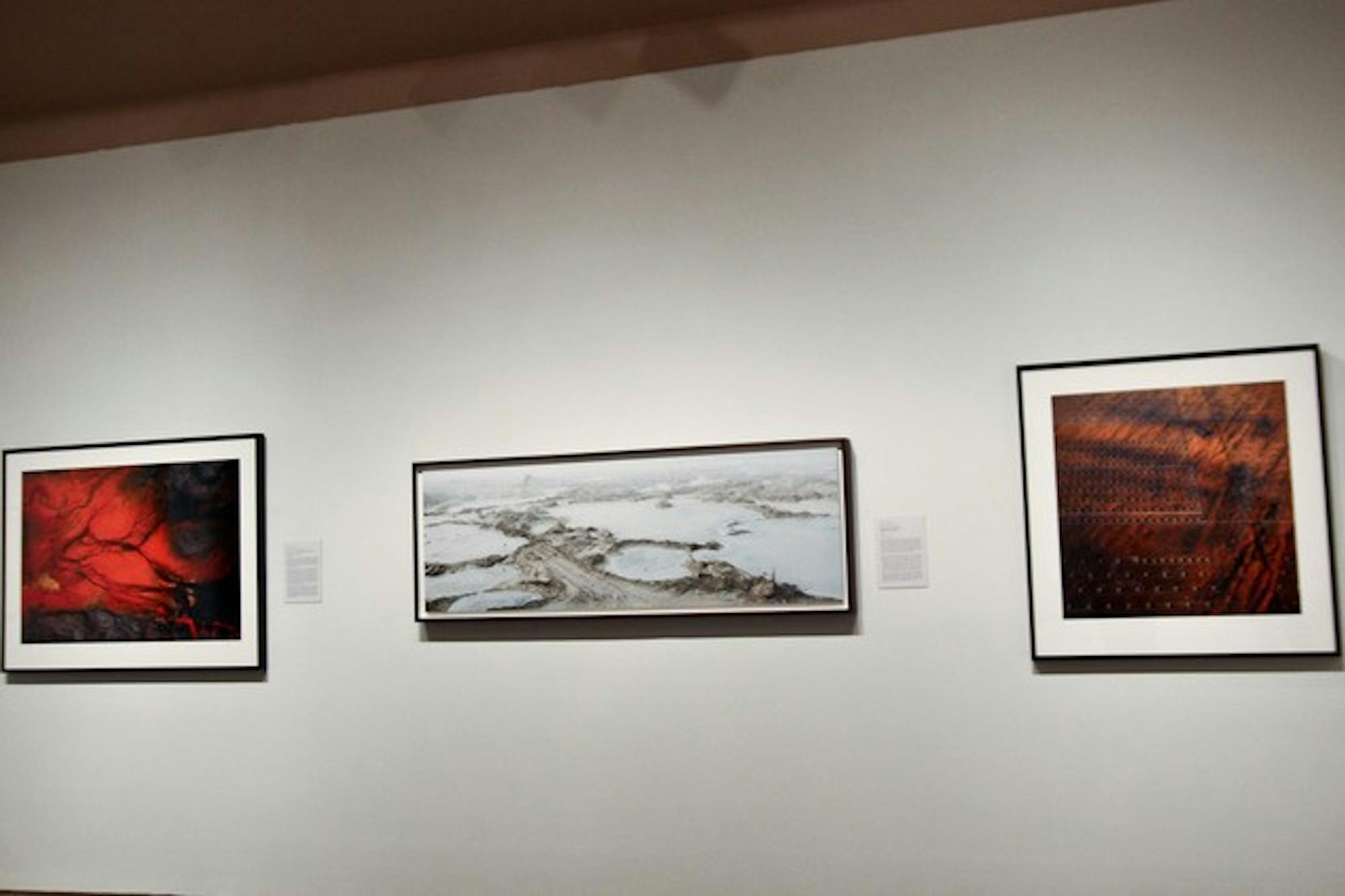Originally purchased by former College President Jim Yong Kim for the president's house, Beltra's photograph now greets visitors to the Hood Museum's "Looking Back at Earth: Contemporary Environmental Photography from the Hood Museum's Collection" exhibit, opening July 7.
Beltra's simultaneously vibrant and unsettling documentation of the BP oil spill characterizes the 23-piece exhibit, which combines aesthetic beauty with underlying environmental significance.
"These photographs are not like propaganda," Associate Director and Curator of Academic Programming Katherine Hart, who co-curated the exhibit, said. "A lot of them are quite beautiful but deal with issues of the environment in different ways."
Kenji Praepipatmongkol '13, the Hood's curatorial intern for 2011-2012, served as the other curator. In addition to writing wall labels and helping choose pieces for the exhibit, Praepipatmongkol organized the collection into six themes: arctic tract/ks, sustainable/unsustainable, density, consumption and waste, industrial impact and powering the future.
The exhibit aims to provide a modern-day response to 20th century landscape photography particularly that of Ansel Adams and the ideal of untouched nature that it propagated, Praepipatmongkol said in an interview with the Hood Quarterly.
"Their call for a return to pristine nature' and a restoration of the natural balance' is a far cry from the sobering present-day reality of pollution, global warming and climate change," Praepipatmongkol said.
The Hood Museum's annual course "Collecting 101," a non-curricular seminar that offers students a look into the museum's acquisition strategy and criteria, largely led to both the museum's collection of environmental photography and the exhibit. The 2009 course featuring documentary photography revealed students' overwhelming attraction to contemporary environmental photography.
Hart remarked that contemporary technology allows photographs to attain a scale that was unthinkable in the time of Adams and other classic landscape photographers.
"It's interesting to me that landscape photography is an old profession, and that environmental photography is the new branch of that [tradition]," Hart said. "You have very stunning images that envelop you because of their scale and involve you in a way that many older photographs do not."
The course asked students to identify images that would remain relevant 50 years from now. In response, students fixated on a photograph of caribou migration taken by former artist-in-residence Subhankar Banerjee, presently on display in the "arctic tract/ks" division of the exhibit. Given the opportunity to pick a Hood Museum acquisition, the students then chose conservation photographer Daniel Beltra's 2005 "Alter Do Chao, Para (Brasil)," a striking image of a string of canoes floating on a riverbed shrunken by drought, to enter the permanent collection.
Hart said the students' "heated" arguments about whether to acquire that photograph or Beltra's "Agua Boa, Mato Grosso (Brasil)," an abstract representation of cattle ranching's role in the deforestation of the Amazon, inspired the museum to build up its collection. The Hood subsequently purchased "Agua Boa" for the exhibition.
Two years later, the course focused specifically on environmental photography in an attempt to reach out to the College's earth sciences, geography and environmental studies departments.
"Looking Back at Earth" seeks to address and interact with students of the environment as well. The museum commissioned the environmental studies department to choose six students to write exhibition panels for a work of their choice within each theme.
Sarah Hakes '12, a studio art major who studied in South Africa on the environmental studies Foreign Study Program her senior year, wrote a panel for Sze Tsung Leong's photograph "La Merced, Quito," an aerial view of vibrantly colored houses packed together on the Ecuadorian city's hilltops that portrays the effects of overpopulation. With her interest in urban geography and planning, she addressed the problem of population density in modern cities.
"I think primarily what I dealt with in the photograph were issues of sanitation and health within crowded cities, and also the counterbalance of urban density versus urban sprawl," she said.
Hakes noted that Leong's aesthetic technique highlights the "sheer immensity" of Quito.
"The scale made it obvious that he was trying to show how overwhelming a city like that is," Hakes said.
Hart expressed confidence that the Hood will continue to reinforce its collection of environmental photography in order to fulfill its mission of integrating its variety of art into the college curriculum.
"This exhibit is reflective of what the collection is at this moment," Hart said. "The question is how it will grow."
"Looking Back at Earth" is on exhibit at the Hood until Aug. 26.




